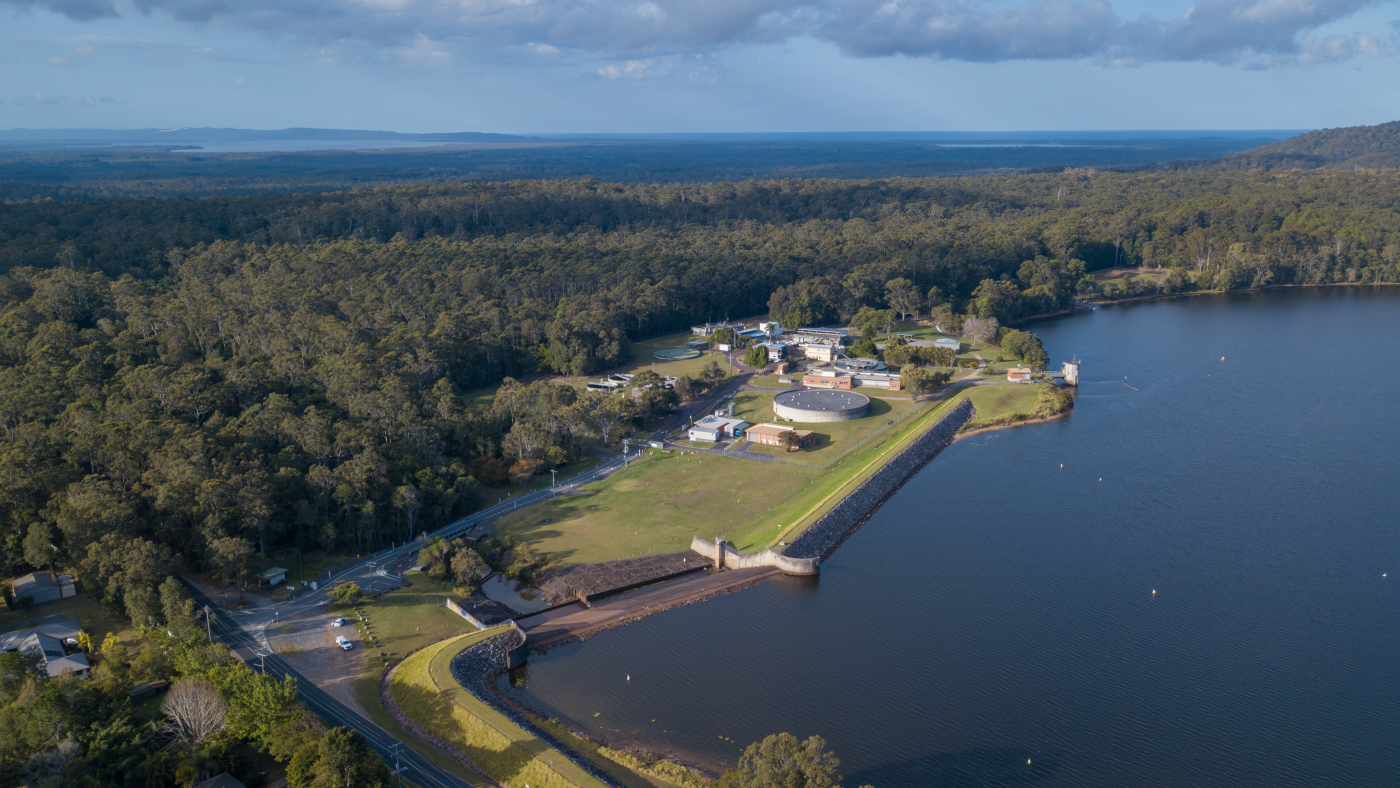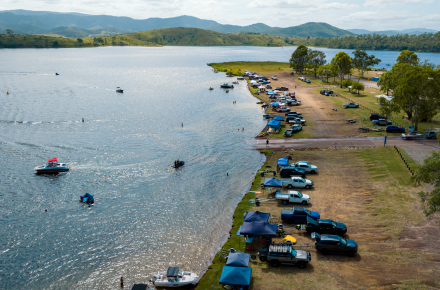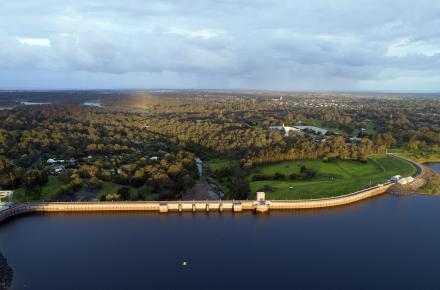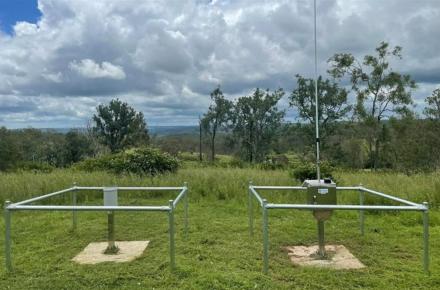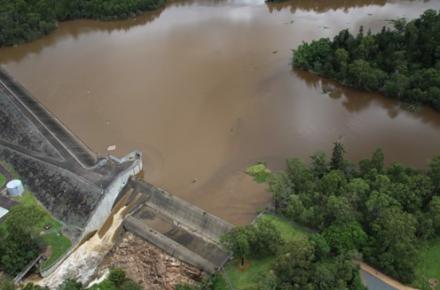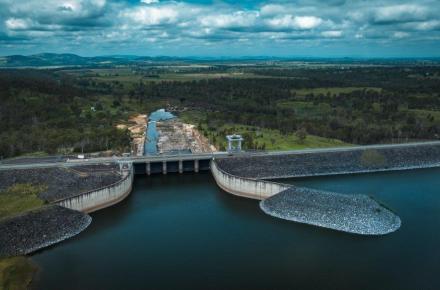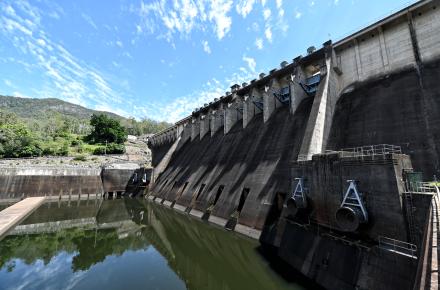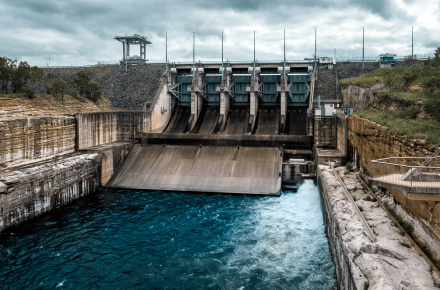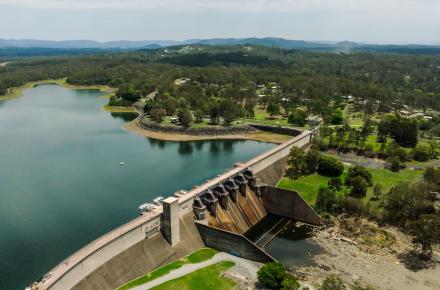Seqwater has released the final design concept for the upgrade of Noosa’s Lake Macdonald (Six Mile Creek) Dam, with early works commencing ahead of major construction in mid-2024.
Part of Seqwater’s Dam Improvement Program, this upgrade will enhance water security and enable the dam to withstand a 1 in 500,000-year flood event.
The dam improvement project involves building a new split-level concrete spillway and upper labyrinth and reconstructing the existing earth embankments.
Following a comprehensive technical review undertaken in 2021 and 2022, the new optimised design will increase the dam’s capacity to withstand extreme weather events while also ensuring the dam remains operational during construction for water security and some recreation activities.
Seqwater has worked hard to keep the lake water level as high as possible during construction. The lake will be temporarily lowered for construction work to occur safely, and a temporary cofferdam will be installed to support water security during construction. The Noosa Water Treatment Plant will continue to operate during construction.
This will be the first major upgrade of Lake Macdonald Dam since its original construction in 1965. Importantly, more than 150 local jobs are expected to be created over the life of the project.
Survey works are currently underway on-site, with site establishment and lake lowering occurring over the coming months. Major work to construct the temporary cofferdam is expected to commence mid-2024, following contractor appointment.
Due to the significant nature of the project, some recreational use of the lake and surrounding areas will be disrupted during construction. However, recreation activities at Lake Macdonald, Lake Macdonald Park and the Noosa Botanic Gardens will remain open.
Seqwater will keep the community informed throughout the project and will hold information sessions early-2024 where the project team will be available to talk through the design and construction approach and answer any questions.
Quotes attributable to Minister for Water, Glenn Butcher:
“I’m pleased to see progress on this critical project. This important upgrade will ensure the longevity of Lake Macdonald Dam so it can continue to provide water security and dam safety for years to come.
“Dams in Queensland are built to very high, internationally accepted safety standards, but methods used to estimate extreme weather and flood risks have changed significantly since some were built.
“This is one of several important dam safety projects being undertaken by Seqwater. Since 2015, Kinchant Dam, Eungella Dam, Wappa Dam, Boondooma Dam, Leslie Harrison Dam, Fairbairn Dam, and Sideling Creek Dam (Lake Kurwongbah) have been completed across Queensland.
“With construction starting soon, the upgrade is also set to boost local employment opportunities in the region, with around 150 jobs expected to be created over the life of the project.”
Quotes attributable to Seqwater CEO, Neil Brennan:
“While Lake Macdonald Dam continues to operate safely, the upgrade will ensure the dam meets updated engineering and safety standards, taking into account extremely rare weather scenarios and climate change.
“The revised design will allow water to be retained in Lake Macdonald during construction, some recreation activities to remain open, reduced impact on aquatic life, plants and animals in and around the lake, and will ensure the Noosa Water Treatment Plant continues to operate for local water supply.
“Projects of this scale are complex and require significant planning time and we thank the community for their understanding while we undertook this important work.”
Further Information:
Through its Dam Improvement Program, Seqwater is investing in South East Queensland’s dams to ensure they provide water security for years to come.
Dams are long-life assets which require continual assessment, monitoring and maintenance.
Seqwater’s dam infrastructure upgrades are progressively being delivered and are due for completion by 2035.
Seqwater undertakes regular monitoring and engineering assessment to make sure the region’s dams continue to operate safely.
